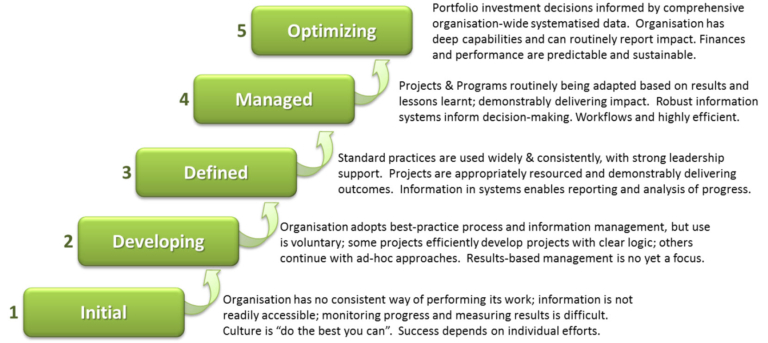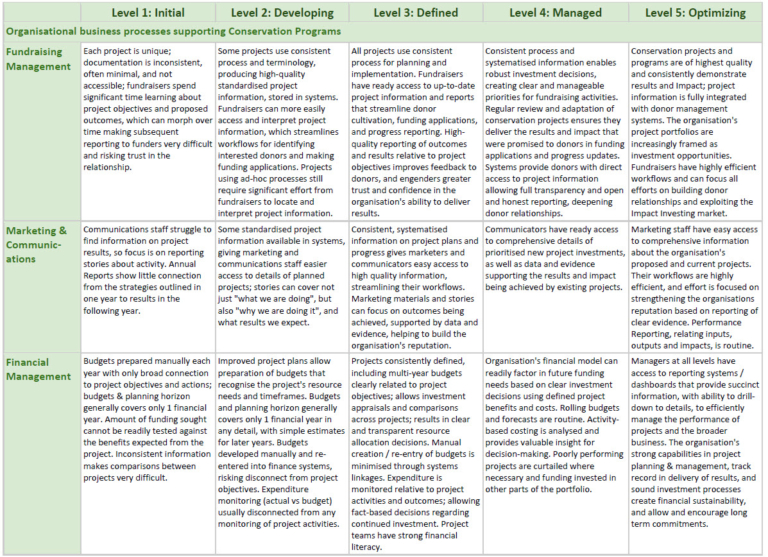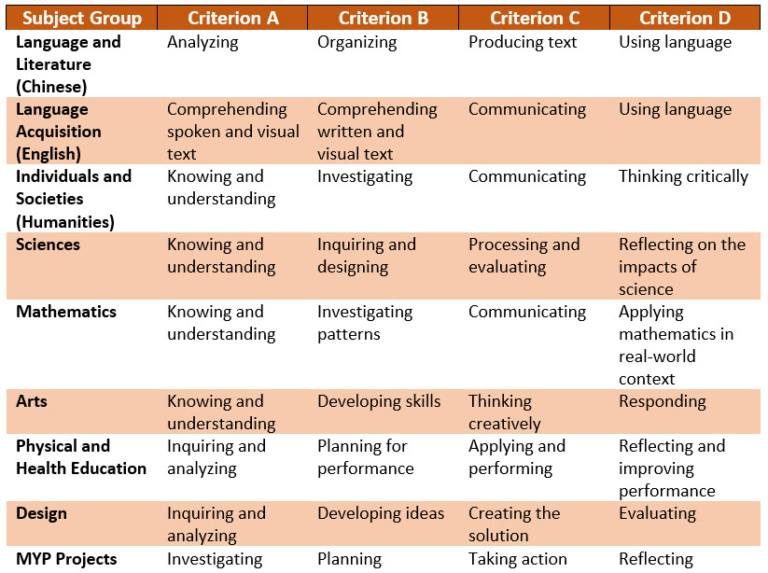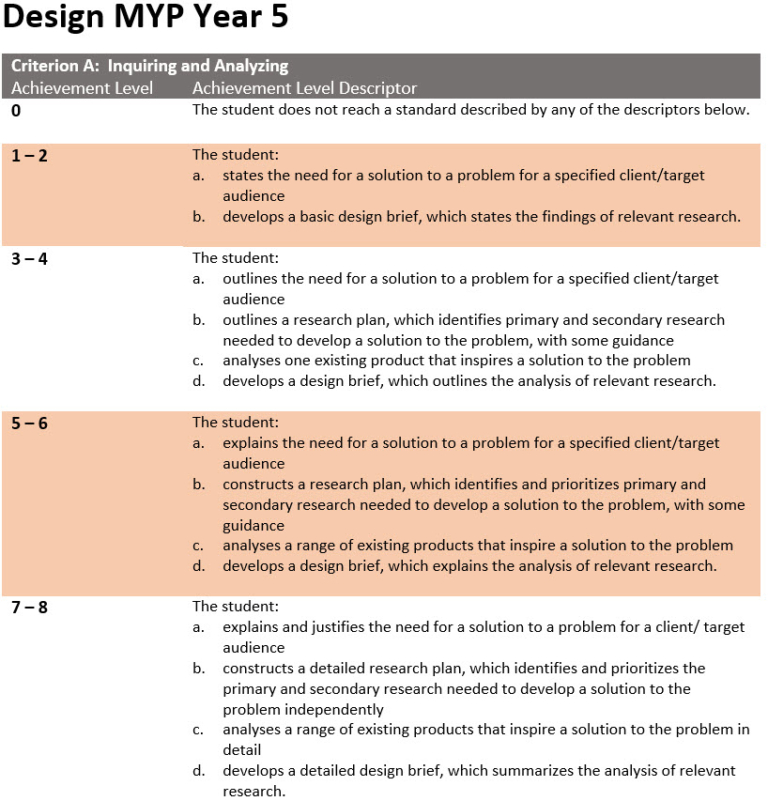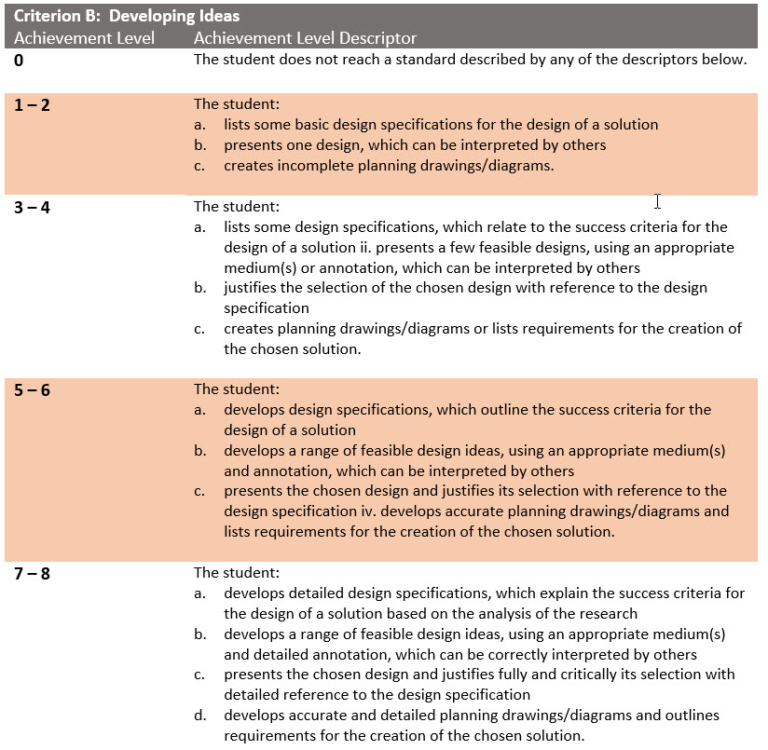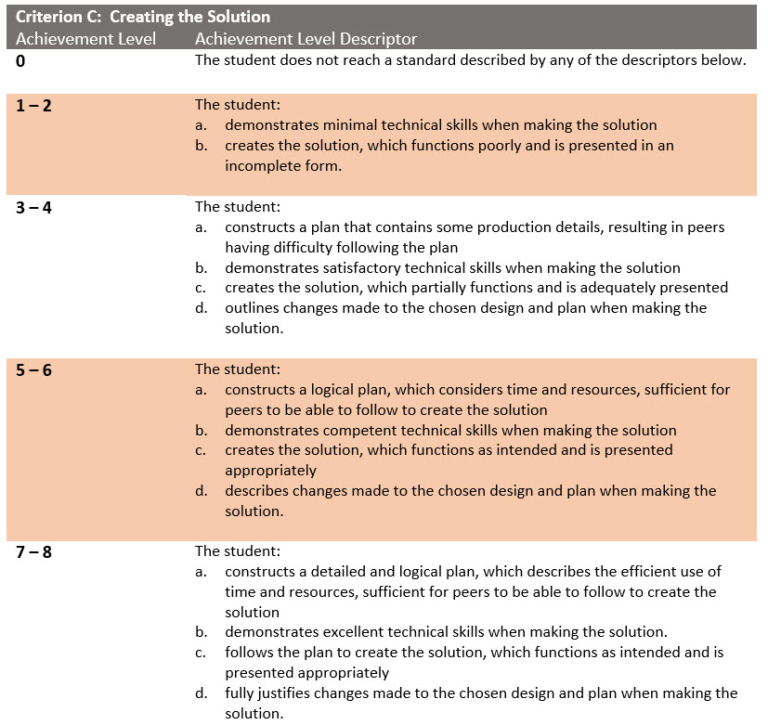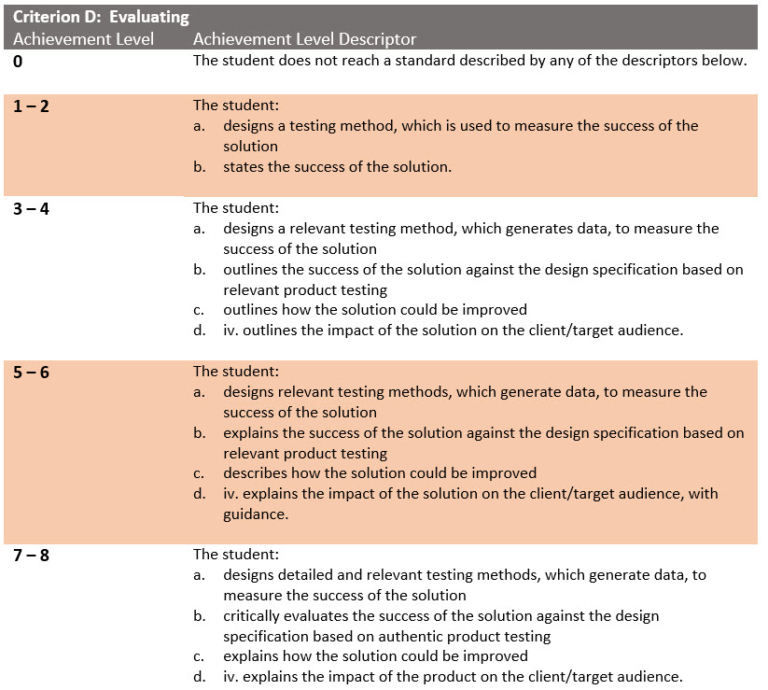The way assessments are done for IB MYP is some what similar to how management consultants assess and improve business processes. For consultants, we figure out the “As-Is” and “To-Be” states of a business based on several dimensions. The gaps between the “As-Is” and “To-Be” define the roadmap that can be clearly visible for all stakeholders to understand. The consultancy tool that we use for this assessment is called The Capability Maturity Model (CMM).
The CMM is a matrix where you have the maturity level on the Y-axis and the different business dimensions that you want to exam to improve a business unit on the X-axis. The maturity level is usually defined from 1 to 5 where 1 being almost non-existing and 5 being best-practice. The cross-section between dimension and maturity level has a verbal description defining what that dimensional state is like.
Management consultants will interview key employees (senior managers, process leaders), collect and analyze organic and external data, test processes and systems and other methods to plot points on the CMM matrix. Once the points are sign-off, the consultants will work with the business to come up with the business transformation plan to get the organization to the “To-Be” state.
An interesting point about consulting with the CMM is that it is not often optimal for the business to be on maturity level 5 for every dimension. One of the reasons why is that it could be too expense from either a cost or resources standpoints to get there. Therefore, the business can agree to be less optimal but the CMM is a good tool to be used to explain why optimal state can’t be met.
IB MYP assessments use a similar methodology to assess the current “To-Be” state of a student when it comes to learning a particular subject. Like the CMM, the way to assess a student is on a matrix where you have an achievement level from 1 – 8 on one axis, and four different evaluation dimensions label Criterion A – D on the other. Different subjects have different labels for each criterion. For the Design subject, criterion A is called “Inquiring and Analyzing”, B is “Developing Ideas”, C is “Creating the Solution” and D is “Evaluating”.
The cross-section between the criterion and their achievement level can also be well defined as you see in the images below. Obviously, the “To Be” state for a student should be at achievement level 8. However, just like with business, sometimes it is just not possible for a student to reach this level on one or more criterion for various reasons. The IB MYP assessment is a good tool to be used to show all stakeholders of these students as to why this can be the case.
There are many ways to assess a student’s current “As-Is” state. Tests, quizzes, exams, homework assignments and other traditional means can be mapped to the different criterions. Also, projects, interviews and other teacher observations can be mapped as well.
In theory, a student should not have a significant dip in achievement level in any criterion from one unit to another. If this happens, the IB assessment is a good tool to flag what specifically could be the problem and be use as a guide to come with fixes to get the student back on track. What should happen is that students should see a gradual improvement in their achievement levels as they go through the different learning units since they understand what criterion they practicing for different assignments.
IB MYP provides a grading scale from 1 to 7 by taking the aggregate of an MYP subject’s criterion scores and then using the IB’s grade boundaries to determine the student’s final grade in that subject. Each grade also has a descriptor to explain why the student is at that particular level.
And now I chime in… 😊 I have worked as a management consultant at IBM Global Business Services. During my time there, I worked on the Strategy & Change team where we did change management projects. I have first hand experience using the CMM as a Project Manager. This model is also used within ITSM (Information Technology Service Management) as part of ITIL (Information Technology Information Library) and COBIT (Control Objectives for Information and Related Technologies) frameworks. I have some experiences with ITIL and knowledge of COBIT.
Obviously, with my IT experiences and understanding I can mentor and guide students within the Design curriculum. However, my experiences can also be extended to other parts of IB as well. If you like to know more, Let’s Talk!


